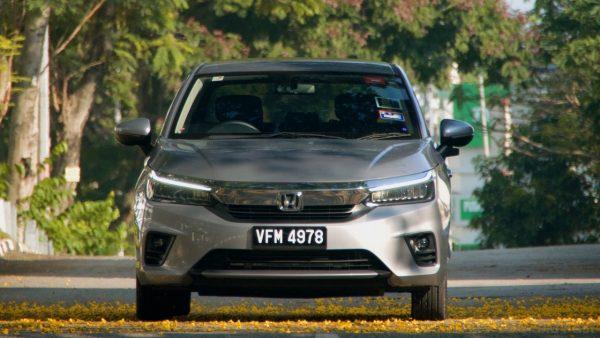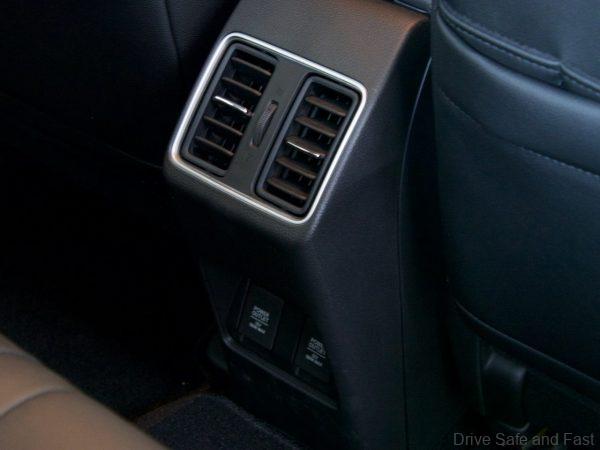Can the latest 2020 Honda City 1.5V petrol model still top the segment in Malaysia?
The Honda City has long been the no.1 choice in the non-national sedan segment. For generations, Honda Malaysia has found a way to perfect the nameplate’s appeal. Contrary to popular belief, it’s not just the reputation and appeal of the Honda brand that sells this particular model. Honda has consistently over-delivered in this segment, paying close attention to what its competitors are doing as well as market trends. They actively implement major, tangible changes with every new generation to keep the City’s perceived value up, and the results speak for themselves.

With this new generation, things are a little different for Honda. For one, this is the first time a generational change in the City has not resulted in a change in the car’s silhouette. The car still rocks the same proportions as its predecessor, with a greater design emphasis on the surfacing, light graphics and details. Inside, the same is true. It almost feels like a contemporary of its predecessor in certain aspects. The instrument cluster is still an analogue affair on the petrol models. However, when you probe beyond the surface, what stands out is the amount of work that has gone into refining the experience as a whole.

Refining The Little Things
With the previous Honda City, most customers were left quite happy with the overall performance. It was still a budget-oriented vehicle, but the City performed well enough despite having some “on-paper” compromises. With this new generation, Honda has improved things where they could. The biggest improvement being the noise, vibration and harshness (NVH) characteristics. By filling the lower cavities in the chassis between the pillars and floor with expanding foam, the City has been made much quieter than before at highway speed.

The improvement to the engine however, is a bit less easy to perceive. It goes from Single Overhead Cams to Double Overhead Cams with a different compression ratio. However, it’s weakness at getting off the line is still quite apparent due to the CVT.

It’s a great setup once you get up to speed, but that initial take off often has the engine revving up to 2,500-3,000rpm. The resulting noise is not something that will be appreciated by drivers and occupants in heavy traffic.

Having said that, it’s still an excellent powertrain that keeps up with its competitors and hits good marks for fuel efficiency and power output.
Changing Tastes, More Discerning Buyers
Honda are acutely aware that its customers in ASEAN today are not the same as the ones they sold cars to just a few short years ago. This generation of buyers pays attention to the finer details. Fluff no longer sells, and clumsily executed technology is a worse sin to modern consumers than no tech at all.

With the new City, you get a sense that Honda has gone further than before in refining the minute details. The interface between the driver and the machine is simpler and more satisfying than ever. Fonts are crisper, dials are pleasant to the eye, and switchgear sounds are satisfying to the ear. A hard feat to get right in such a budget-tight segment.
Identity Crisis
While this gives the City a much more pleasant and up-to-date look and feel, it also creates a problem – a lack of identity. The best way to keep up with design trends is to see what the market leaders are doing and take some “inspiration”. It would not be a stretch to think that the designers of this new City took some inspiration from the current generation 3 Series for its taillight graphic.

While it does help the City look very modern, it does worsen the City’s lack of its own identity.

When Honda first started using the ‘City’ name, it was not for the car you think of today. It was for a Japanese Domestic Market miniature 3-door hatchback/van. This series was retired in 1993.
Then when the Southeast Asian City was born in 1996, it was a completely different vehicle that used the older Civic EF platform as a basis.
However, the lineage restarts ONCE AGAIN in 2005 when Honda repurposes the Jazz/Fit hatchback for a Southeast Asian sedan. This is where the current City’s true origins lay. And now some 15 years later, the City is starting to gain its footing. Honda is divorcing it from the Jazz/Fit range and expanding the City family to include a 5-door hatchback model that caters to the Southeast Asian market.

Conclusions
While the new City 1.5V is the best City 1.5V ever offered, I feel it’s not going to have as easy a time convincing buyers as its predecessors did. In previous generations, Honda could proudly boast to be the first-in-segment to offer Stability Control, 6 airbags, and other neat equipment pieces. In this generation, its primary rivals all have those features AND more. In fact, both the Nissan and Toyota alternatives have autonomous emergency braking. Honda’s strategy of reserving this important bit of kit for the hybrid variant may not pay off, as that version ended up delayed by many months and its final price was well over RM100,000.

And that’s the second issue, the City is better than ever, but for the first time in years it has some genuinely tough competition. Nissan has gone all-out, offering the only turbo in the segment and AEB as standard across the range on the turbocharged new Almera. Toyota has finally given the Vios a handsome face and the latest 1.5G petrol model has enough boxes ticked to please enthusiasts. And of course, there are the dreaded national brand competitors. Perodua with the well-rounded Ativa, undercutting the City and Proton with the tech-rich X50 offering twice the perceived value of its price-bracket rivals.

Despite all this, the Honda City still has a lot of appeal and I can understand why many would choose it over its rivals. It has the best driving characteristics at highway speeds of all its peers. Just like the Proton X50, the City doesn’t feel like a cut-cost product in its cabin construction. It feels like it was designed and put together by car enthusiasts who know what to look out for in a car. And for that, I think it will attract a huge group of buyers. Its only objective shortcomings are the lack of AEB on the petrol models and a bit of engine/gearbox whine when taking off from a standstill.
Honda City 1.5V Specifications
Engine: Inline-4, 16-Valve, DOHC, Petrol
Capacity: 1498cc
Gearbox: CVT (automatic)
Max power: 119hp @ 6,600rpm
Max torque: 145Nm @ 4,300rpm
Top Speed: 195km/h
0-100 km/h: 10.4seconds
Price: RM86,541.45








